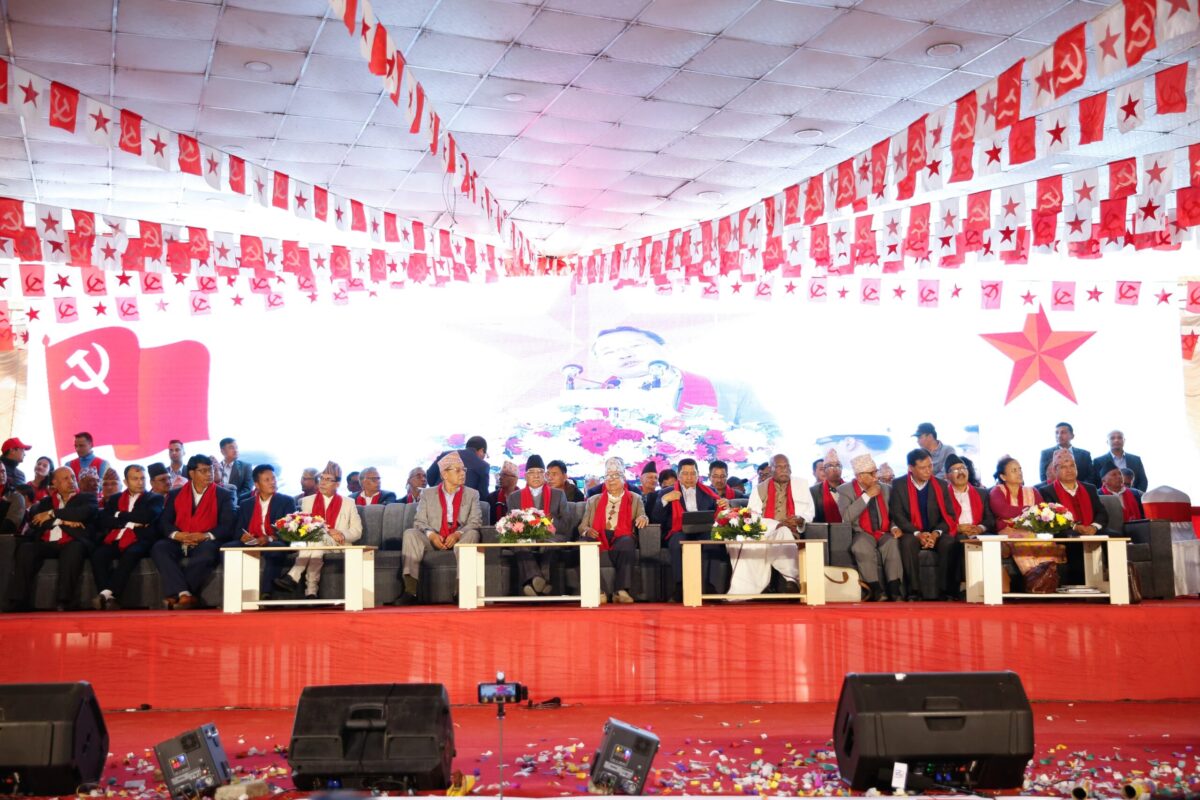

KATHMANDU: A merger of nine leftist factions including the CPN (Maoist Centre) and the CPN (Unified Socialist) culminated today with the formation of the Nepali Communist Party at the national unity conference in Bhrikuti Mandap, Kathmandu.
The newly unified party has proposed “Star” as its election symbol.
Among the key participants was former Prime Minister Jhalanath Khanal, a senior leader of the Unified Socialist, who had previously expressed dissatisfaction with joining the Maoist-led merger.
Khanal met Maoist Centre Coordinator Pushpa Kamal Dahal ‘Prachanda’ on Wednesday morning and subsequently joined the unification process.
The merger includes the Maoist Centre, Unified Socialist, Janata Samajbadi Party, Nepal Samajbadi Party, the Biplav-split CPN, CPN Samajbadi, CPN (Maoist Samajbadi), CPN (Samyabadi), and the Deshbhakta Samajbadi Morcha led by Gopal Kiranti.
The unification, however, was not accepted by all.
Senior Unified Socialist leaders such as Ghanashyam Bhusal and Ramkumari Jhakri opted out.
Bhusal announced plans to restructure the Unified Socialist Party into a revolutionary party with a national conference scheduled in December, while Jhakri indicated her faction may return to the CPN (UML).
The merger effectively splits the Unified Socialist Party, originally formed under Madhav Kumar Nepal after leaving the UML four years ago.
The majority of the party, including Nepal and senior leaders such as Badruram Bhusal, Pramesh Hamal, Rajendra Pandey, Prakash Jwala, and Jagannath Khatiwada, joined the new Nepali Communist Party.
The unification ceremony was attended by leaders and cadres from all ten participating leftist factions, marking a major consolidation of Nepal’s communist movement.